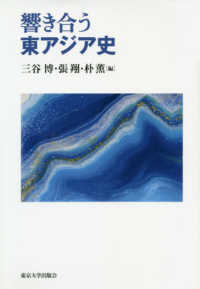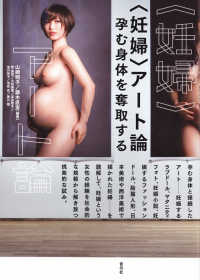- ホーム
- > 洋書
- > 英文書
- > Performing Arts
Full Description
Through a series of case studies, this book explores the role of live animals on the stage, from the early modern era to the present time. The contributors deal with visual and textual representations of performing animals; typologies of animals in the theatre; the hybridization of the drama with the circus, the zoo, and the cinema; as well as the semiotic transfer of animal roles from the text to the stage. The focus lies on the changing historical fortunes of the four-footed actor and on exploring the ways that attitudes to the animal affect their dramatic representations - within aesthetic contexts but also in their dramatized scientific use. Exploring snapshots of acting animals from their earliest manifestation on the early modern stage, the chapters contextualize and theorize particular uses of the animal actor, and key into current debates on the cutting edge of animal performance studies. While seeking to consider how these theoretical perspectives were formed, the collection delves into the multiple ways through which the animal presence problematizes the practice of theatricality.
This book was originally published as a special issue of Studies in Theatre and Performance.
Contents
1. Introduction: real animals on the stage 2. 'A pleasant tragicomedy, the cat being scap't'?: William Sampson's The Vow Breaker (1636) and the instability of genre 3. 'Des singes, c'était le narcisse': class, imitation and performing monkeys in late-eighteenth century Paris 4. Replacing injured horses, cross-dressing and dust: modernist circus technologies in Asia 5. There is a whale in the room: Pina Bausch's animals on stage 6. Animals in socially engaged performance practice: becomings on the edges of extinction 7. 'When the animal cannot keep up a good appearance it had better go out of the room': vivisection and theatricality in the nineteenth and early twentieth centuries








